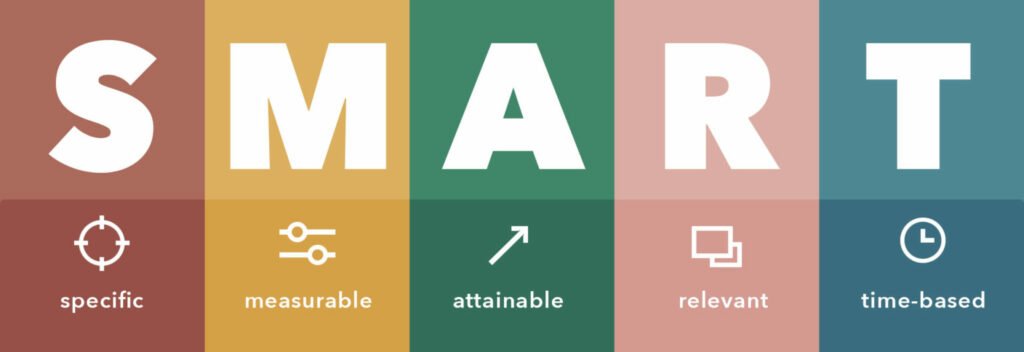
Article
5 min read
Employee Productivity: The Complete Guide
Styrmir Masson
Apr 29, 2020
Chapters
Employee Productivity: The Complete Guide
Employee productivity is the engine on which a business runs. The more efficient your staff, the faster the turnaround and the healthier your margins.
The quality and speed of your team’s work might seem ephemeral and out of your control: after all, it’s them carrying out their tasks, not you. But there are several measures you can take to improve staff productivity. This begins at the hiring stage and continues all the way through the tenure of their employment.
Employee productivity is the responsibility of the manager as well as the staff. A manager’s team should feel secure, motivated and supported, which in turn should lead to greater productivity. And, like every managerial discipline, the field of employee productivity is constantly evolving.
In this article, we will look at:
- The definition and importance of employee productivity
- Key employee productivity statistics
- Reasons for low employee productivity
- Strategies for improving employee productivity
- How to measure employee productivity
What is employee productivity?
Employee productivity is, essentially, output. That varies according to industry, but it might be the amount of tables served by a waiter in a shift, drinks served in a bar or products created on a factory assembly line.
It’s a relative term: meaning that the same worker might be more productive in one environment or even time of shift than another. For instance, a busier factory will have more productive staff. So, productivity should be measured across a company average.
A key factor in productivity is motivation. Maslow’s hierarchy of needs begins with safety and love, but once they have been addressed, people look for esteem and self-actualisation. A happy, confident worker tends to be a productive one.
Productivity is vital not just for maintaining a company’s bottom line; but also for dependency and consistency. Knowing your company’s output makes it easier to predict and plan for your business.
What drives employee productivity?
The tools an employee needs go beyond the toolbox. Yes, effective, operational equipment is crucial (whether it’s cash register, computer or stethoscope) but a sense of purpose, work satisfaction and ultimately engagement are just as important.
Here are some factors that affect productivity:
1. Environment
What’s the workplace like? Is it friendly, safe, well-lit and comfortable? Is it confusive to a happy, productive working atmosphere?
This environment also means a friendly, professional workspace.
2. Engagement
We discussed this in our comprehensive guide to employee engagement. Essentially, employee engagement asks whether staff are enthusiastic, committed and happy about their job.
3. Processes
A clear, dependable process of how things get done is helpful for any worker. If they’ve been asked to do something, they should know the timeframe of when it should be done, the key performance indicators (KPIs, the project’s measure of success) and the steps to be taken.
Well-thought-out processes are not only efficient, but they also foster a more cooperative and less stressful work environment, which contribute to staff happiness and productivity.
A good process structure aids both productivity and efficiency. These qualities are interrelated but often confused and interchanged. Let’s take a look at what distinguishes them.
The difference between productivity and efficiency
Productivity is the speed or rate at which a task is completed: the context or barometer is the production rate of a worker (either in a competing company or a colleague) in a similar role.
Efficiency is more about use of existing resources: it examines various factors, like use of time, equipment, staff hours and more, asking whether these resources are used to their maximum potential.
A workplace could be productive (getting things done), but inefficient if it uses too many resources to do so.
Ideally, workers are given every opportunity to live up to their potential. Their productivity should be working in tandem with an efficient workplace.
Employee productivity: some key statistics
Productivity has a very real impact on a business’s bottom line. It’s worth investing your time into ensuring your employees are as productive as possible. Not only will it make your business more efficient and with healthy margins, but it will also make your workplace more appealing to potential hires: everyone wants to work for a successful, well-run organisation.
A productive employee doesn’t need as much supervision as a problematic one. In many (if not most) cases, they can work autonomously and use their own initiative. This frees management up to focus on other ways to grow the business.
Better productivity also means better customer experience, fuelling positive word of mouth for both potential clients and staff.
As you might expect, there have been several studies in this field. The consensus is that productivity is an ongoing, worthwhile investment that can pay dividends if implemented the right way. Conversely, ignoring productivity can be a costly mistake.
- Social technology can unlock a huge boost in productivity.
A study from McKinsey found that most companies are not capitalising on social technology to communicate with their staff. And what’s more – firms that do invest are being rewarded: better social technology leads to 20-25% improvements in productivity.
More specific, group messaging leads to more streamlined communications and less time spent searching for information on email (among other improvements in comms and admin).
- Your team’s well-being has a real effect on their productivity.
A workforce that’s happy and engaged in their job is not just more pleasant to work with, they’re more productive too.
A poll by Gallup had some sobering statistics relating to workplace happiness: only 32% of US workers are engaged in their jobs. While engaged and happy employees miss 70% fewer of their workdays per year due to illness.
Unsurprisingly, employee churn is lower among happy staff, with 59% of them less likely to look for another job within the next 12 months. And 27% of happy workers are more likely to have an “excellent” productivity report by their employers.
- Replacing an unproductive worker costs thousands.
GlassDoor did some research on how much it costs to hire and onboard a new employee. They found that the cost of a new hire is approximately US$740 at an entry-level and over US$3,700 at executive level.
So, unproductive workers have multiple costs; the cost of lost revenue from their low work-rate, and the added cost of ultimately replacing them.
- A massive drain on productivity is interruptions.
It’s perhaps not surprising that interruptions hinder workflow. But we’re only now learning how damaging it can be to productivity. In an interview with Fast Company, Gloria Mark, Professor in the Department of Informatics at the University of California, Irvine, talked about her academic research in the field of interruption.
She has found that 18% of interrupted work is not resumed on the same day. And, just as damning, it takes an average of 23 minutes and 15 seconds to get fully back on track.
This is something to consider, and can be addressed with interruption-free zones or email-free hours, for instance.
- One study found that 63% of people are prepared to quit their jobs.
A study by Dynamic Signal found that communications in the workplace have become inefficient, and even affect work satisfaction and performance. As well as the chilling statistic in the headline about 63% of workers wanting to quit, the study also found that 70% of workers feel overwhelmed by workplace communication in its current form.
- 90% of British workers feel unengaged.
In a damning 2017 survey, only one in ten British workers said they felt engaged in their work. And 22% felt “actively disengaged”. American employees are happier, but still have plenty of room for improvement, with 33% saying they’re engaged at work.
In an interview with People Management about the survey, Jane Sparrow, co-founder of The Culture Builders, said: “We are also driving ourselves harder and harder, but we are not as productive as we used to be because we are always on”.
On a related note, a report from the UK’s Office for Budget Responsibility found that productivity had only grown 0.2% in Britain in the last five years. This is despite the fact that the region had seen employment grow steadily across that same period.
- The average worker is productive for less than three hours a day.
Staying in the UK, new research from VoucherCloud has found that the average worker is productive for only 2 hours and 53 minutes a day.
So what are they doing for the remaining five hours? The survey found that when not working, staff are (in descending order) checking social media, reading news websites, chatting with colleagues about out-of-work activities and making hot drinks.
These statistics might give you pause, but don’t despair. First, let’s take a closer look at the root causes of this productivity abyss. Then, we can examine how to fix it.
What makes your employees less productive at work?
Employees are, of course, individual people with rich inner lives, dreams and frustrations. These issues could be common to everyone in your company, or just apply to one worker. But, despite the diversity in opinions and attitudes, there are some things a company can look at to make work more productive across the board.
Here are some root causes for disappointing productivity:
- Motivation is low. Motivation is one of the most prominent factors in productivity. In a workplace, motivation might be intrinsic or external.
These differences relate to the source of motivation. Intrinsic comes from within, as the worker finds fulfilment, or that good work is related to their core beliefs (discipline, or perfectionism, for example). It might be that they get creative fulfillment, or take pride in the outcome of a project. Or they might enjoy the positive interactions that come with the job (sales people or those dealing with the public experience this, for example).
Extrinsic motivation are external factors. This could be financial reward or motivation; respect from peers or management; or societal (such as the respect that comes with certain positions or a job well done).
Both forms of motivation are welcome, though intrinsic tends to have more staying power as it is less dependent on outside forces.
- They don’t feel rewarded for a job well done. This is, as you’d imagine, an incredibly common motivation sapper. If an employee is not compensated for being more productive, or generating income, resentment can sink in.
For instance, if a worker exceeds productivity targets by 50%, but doesn’t see an extra penny (or even acknowledgement) for that work, why should they continue to be so productive? They’re aware, if a company does well, that somebody is being compensated. And that success should be shared on some level.
- They’re frequently distracted. We mentioned this above in our statistics section, but distractions cost productivity and affect a company’s bottom line.
Additionally, it can lead to frustration for the worker – especially if they’re not “self-distracting”. Internal distractions (or “self distracting”) are when an employee checks their own social media, for instance. While external distractions constitute meaningless meetings, excessive emails or interruptions.
Be conscious of your workers’ flow, of how they enjoy work when they’re allowed to do it uninterrupted.
Distractions might also extend to office culture: is the office too loud? Is the workplace appropriately secluded from the outside world? Do staff have to answer calls or field requests unrelated to their work?
- They have to multitask. Multitasking is tricky for anyone, but the real issue arises when task-switching comes into play. As we mentioned above, it can take 23 minutes to fully re-immerse oneself in a task after a distraction. But another issue is the cumulative cost of switching.
Some estimates found that email interrupts a working day 96 times on average, and that task-switching can take anything from one to 23-minutes to get back into work per interruption.
So, a clear run at a task or project is always preferable, if possible.
- Bad time management. We all have the same 24 hours in a day, so how is it that some of us get more done than others? This could be down to a number of factors. Communication on projects can be the difference between endless back and forths and a seamless execution of tasks. Effective delegation works wonders too – allocating work based on people’s strengths. Time spent on planning will save you from logjams further down the line.
Strategies to increase employee productivity
Here are some ways to address the issues above…
1. Hire for cultural fit
You want someone who buys into your mission, because that’s the kind of person who’ll put in the extra effort and make an impact on bottom line profits. Hiring people who only do the bare minimum of their job duties will cause business to stagnate.
The ideal worker believes in what your company does and is a self starter who can work independently. They should be excited to get started.
We discussed this in depth in our recruitment onboarding guide.
2. Implement an onboarding programme
When you do hire that person, give them everything they need to hit the ground running. This means structured, comprehensive training; onboarding about the company’s culture and attitudes; and a workable task system with deadlines, names of team members responsible and documentation of these processes.
3. Give your workforce access to the right tools
Your employees should have as few obstacles to their work as possible. So, a scheduling app (such as Planday’s scheduling app) is hugely beneficial in giving ongoing clarity.
Communication apps are growing in popularity and effectiveness. You might be aware of group chat apps like Slack, which are great for short notice comms; or Basecamp, which works as a go-between between teams and managements.
4. Train them up
Adequate training is more than worth the time and money you spend on it. Your staff should be confident, efficient and self-reliant as soon as possible, so building a structure of incremental, efficient training is paramount.
Learn more in our guide to training.
5. Lead by example
A simple mantra for leadership is to act like a model employee. Behave in the way you would like your staff to behave: be honest, diligent and respectful to colleagues and team members.
We talk extensively about staff management and motivation in our guide to management.
6. Communicate regularly
Regular communication works for all parties. For staff, it’s reassuring to know that they’re listened to and that help is available should they need it.
For managers, it’s especially important in tackling procrastination: regular updates will ensure they know accountability is expected and more likely to stay on track with work tasks and projects.
Find out more in our blog post about how to run effective standup meetings.
7. Make work/life balance a priority
While productivity is important, it’s also vital to remember that employees are not machines! Allow and encourage breaks (which can boost performance) and don’t encourage burnout.
Offer flexible work schedules and (if possible) options to work from home. Everyone works differently, so allow staff to do what’s effective for them.
Exhausted employees are, of course, not productive. And many of them change jobs.
8. Give your staff autonomy
Everyone likes being trusted, and workers tend to rise to the occasion. Autonomy is widely believed by psychologists to have a positive effect on productivity and workers’ happiness. It’s discussed in the book Human Autonomy in Cross Cultural Context.
Avoid being too fixated on the operational side. Instead, focus more on trusting people to manage the day to day and mentor them. Paradoxically, managing less can get you better results.
By the same token, micromanagers correlate with poorer performance. In fact, some apps, like Planday’s Punch Clock, allow staff to swap shifts and manage their hours.
9. Focus on team building
Team building is a great way to foster team morale. If your team is bonded and has comradery, it’ll help everything from workplace atmosphere to output.
We wrote an elaborate team building guide and, separately, a blog about team-building activities.
10. Consider implementing a wellness programme
Sleep deprivation, stress and burnout all have a huge impact on a company’s output. Productivity suffers, but also, absenteeism and staff churn begin to climb when staff start to run out of energy and motivation.
This is why more and more organisations are baking in wellness solutions to day to day life. Meditation sessions, yoga, healthy food, understanding when it comes to working hours, will all have a positive effect on your staff and your company.
11. Ensure your team members are working on tasks that align with their strengths
Where possible, minimise the time spent on what might feel like a chore to them. And the better you get to know your staff, the more you’ll learn what they like and dislike doing.
For instance, some workers hate presenting results; while others love it. And some of their teammates, in turn, might be more passionate about collating numbers and organising data. And so on.
If a worker enjoys a task, they’ll do it faster and more effectively. So try to play to your team members’ individual strengths.
12. Have a team brainstorm
Don’t forget to talk to your team about what they think could help productivity. Working at the frontline of any industry gives a unique, valuable insight on how things can improve. So these workers will likely have great ideas on how to boost productivity as they’re in the thick of it.
13. Find creative ways of rewarding them
There are countless ways to reward employees, whether it’s for a good day’s work, a mighty individual achievement (like a huge sale) or on an ongoing basis.
Everyone likes to be appreciated, and employee rewards boost both productivity and employee loyalty.
Small rewards could be:
- Handwritten notes of appreciation
- A regular free lunch
- Classes or lessons they’d like (from yoga to cooking to music and so on)
- Gift vouchers
Greater rewards might be:
- Additional days off (always popular!)
- Profit share
- Performance-related bonuses
How to measure employee productivity
Productivity can be tricky to measure, because it’s subjective (managers differ on what yardsticks to use) and varies across industries and companies.
You can devise your own system, though. Here’s how.
1. Employee productivity formula
This is challenging, in that it’s manual and has to be done from scratch: a mom & pop cafe couldn’t have the same productivity as a major Starbucks branch, for example.
Focus on each team member, how many hours they have in the day, and what you’d like their output to be. Take into account time spent training one another, fallow times (a slow month or day for the business, for instance) and so on.
We recommend focusing on the individual team member rather than overall business KPIs.
Instead, set SMART goals collaboratively that are tied to business goals and show them when their hard work is helping the company to succeed.
SMART goals are; specific, measurable, attainable, relevant and time-based.
2. Revenue per employee ratio
One way to measure productivity is to look at your employee costs (salaries) and the revenue coming in. This isn’t 100% precise: some staff are necessary for overall business but don’t generate money individually. However, it paints a helpful, overall picture of how the company is doing. And it can be measured against previous years once you get the formula down.
3. Productivity tracking software
There’s a wide range of productivity apps and software available, catering to a variety of business types.
They include:
- Desktime, which combines monitoring with project management and productivity analysis.
- Hours is a mobile app (compatible with Apple Watch) that manages employees’ time and tasks.
- TimeCamp monitors time use across several devices and employees.
Planday – helping you get the best from your team
Monitoring productivity, scheduling and an overall team is immensely challenging. That’s why Planday’s features, like communication aids, business overview management and more, will help you keep all of the cogs of your business machine running smoothly.
Also, the Planday blog is a wealth of management information, covering everything from staff engagement to remote working.











